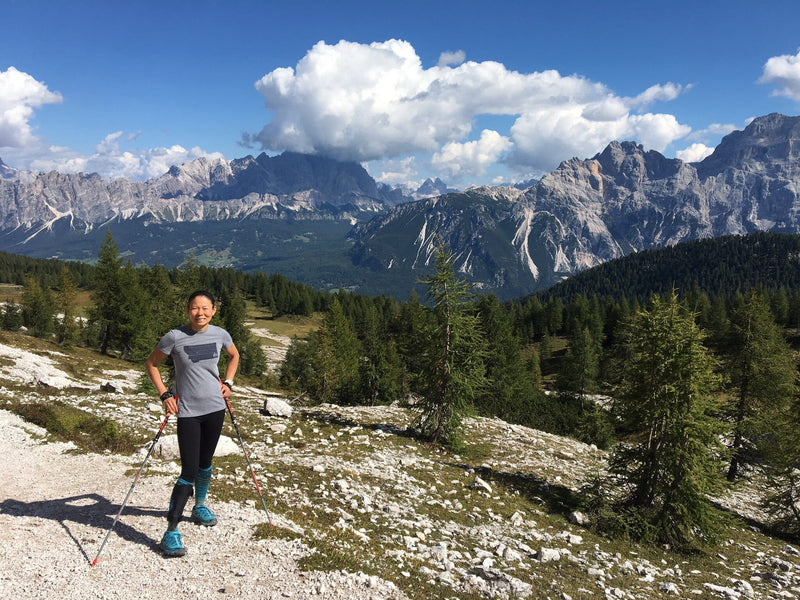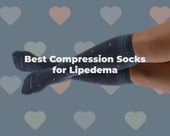
With the help of therapy sessions, assisting products and a bit of patience, I’ve overcome a challenging, yet rewarding, recovery from my spinal cord injury.
Written by: Aika Yoshida, Physical Therapist and Spinal Cord Injury Survivor
On July 28, 2013, my life changed forever. In a split second, I went from an extremely active outdoor enthusiast to someone who needed help to simply use an iPhone. Since then, I’ve faced a challenging road to recovery, but nonetheless, a rewarding one. With the help of therapy sessions, assisting products and a little bit of patience, I’ve surpassed my own expectations on my potential.
It all goes back to that warm summer day in late July. I was practicing acrobatic yoga when my partner lost control and dropped me on my head, compressing my spinal cord and resulting in immobility from the neck down. I underwent emergency surgery for a C6 incomplete spinal cord injury.
Spending almost a full month in the hospital following the procedure, I asked my psychologist endless questions. The most important question being, how will I recover? Her response was rather simple—meditation. I was in disbelief. All my life, I’ve fed off of the adrenaline rushes brought by the outdoors, and now I’m being asked to meditate. Trail running, rock climbing and mountain biking as my go-to forms of stress relief were out of the question. Now wheelchair-restricted and dependent on assistance, I realized I was forced to gain a new perspective on life and face the road to recovery.
As a physical therapist, I knew the best thing I could do was to focus on my rehabilitation for my recovery. Repetition was going to be the key to re-educate my body on basic movements. And even though I wasn’t sure how meditation would help my recovery, I was willing to give it a go.
The Road to Physical Recovery
When I was in the rehabilitation hospital, I received a minimum of three hours of therapy every day. Once I returned home, I was strict with my therapy regimen and spent two hours in the morning and another two hours in the afternoon going over the home exercise program provided by my outpatient therapists.
I strongly believed in the importance of following developmental milestones for the recovery of my spinal cord injury. Developmental milestones are defined as the behaviors and physical skills seen in infants and children as they learn and develop movement. The first step is head and neck control followed by rolling, sitting, crawling, walking, running and so on. I spent significant time on the floor practicing rolling and crawling to work on my coordination while building my overall body strength through each developmental milestone.
 It’s hard to believe that within a year, my dedication to regain my independence took me out of a wheelchair and back to climbing, with the help of Paradox Sports. Nearly six years after the accident, I still rock climb as an adaptive athlete and now compete at the national and international level. I’m also thrilled to share that, last September, I won the 2018 IFSC Paraclimbing World Championships in Innsbruck, Austria, representing my home country, Japan.
It’s hard to believe that within a year, my dedication to regain my independence took me out of a wheelchair and back to climbing, with the help of Paradox Sports. Nearly six years after the accident, I still rock climb as an adaptive athlete and now compete at the national and international level. I’m also thrilled to share that, last September, I won the 2018 IFSC Paraclimbing World Championships in Innsbruck, Austria, representing my home country, Japan.
I’m so grateful for what I’ve regained physically. I cannot run or jump well, but I can walk with use of carbon fiber leg brace. I don’t go mountain biking anymore for safety reasons, but my physical abilities in all but my right leg and right hand have improved beyond my wildest dreams. I am strong and confident, and with the help of my leg brace, I can walk and climb with relative ease.
Photo credit: Sytse van Slooten
Meditation for Chronic Pain
We all experience pain throughout our lifetime. But living with an invisible disability that is both mentally and physically debilitating is a lifelong journey. Given my background as a physical therapist, my physical recovery treatment was regimented, measured and purposeful. However, it became increasingly apparent that managing my mental wellness, in addition to physical strength, is essential to my overall happiness and contentment—but perhaps equally as difficult as learning how to walk again.
I face chronic pain daily. Managing my symptoms feels like a full-time job, and practicing mindfulness to focus on the present moment is oftentimes a challenge. My mind is constantly thinking about many things—the past, present and future—at an outrageous speed. But there’s extensive research showing mindfulness improves happiness. Then, one day, it clicked.
 The reason why I enjoyed trail running so much was because I was in the present moment, focusing on my steps to avoid tripping over roots on the trail while enjoying nature—just like climbing. Now, I climb because it makes me feel alive and allows me to focus on that particular moment. I find myself not worrying about my chronic pain when I’m trying to reach for the next hold. This is fundamentally the same concept of meditation, to be truly present. Thinking back to my stay in the hospital, maybe my physcologist’s recommendation, meditation as a form of therapy, wasn’t so crazy.
The reason why I enjoyed trail running so much was because I was in the present moment, focusing on my steps to avoid tripping over roots on the trail while enjoying nature—just like climbing. Now, I climb because it makes me feel alive and allows me to focus on that particular moment. I find myself not worrying about my chronic pain when I’m trying to reach for the next hold. This is fundamentally the same concept of meditation, to be truly present. Thinking back to my stay in the hospital, maybe my physcologist’s recommendation, meditation as a form of therapy, wasn’t so crazy.
Over the years, I’ve taken an eight week Mindfulness Based Stress Reduction course and incorporated daily meditation practice into my life. I’ve included activities into my daily routine that allow me to be present, even if it’s for just 30 seconds—such as washing my hands mindfully between patients.
In the evenings, I like to spend time on the floor practicing MovNat ground work to allow physical movement while paying particular attention to my breathing and body, mindfully. This also helps with the chronic pain and muscle tightness I continue to endure from my injury. I don’t necessary experience runner’s high with these activities, but there are many similar positive benefits that I gain from them.
Now, in my work as a physical therapist, I often discuss with patients the importance of breathing and paying attention to what he or she is doing in the present moment. We all live in this fast paced, busy world. It’s easy for patients to crank out repetitions of some exercise mindlessly with poor quality of movement. Therefore, I recommend patients slow down at times and focus on their body to just notice what they are experiencing and to be present in the moment.
Function Over Fashion
I miss wearing Uggs and cute boots in the wintertime. And in the summer, flip-flops are a no-go because of my leg brace. Choosing function over style was hard to accept at first, but having a good quality of movement is essential to completing day-to-day tasks and fulfilling my next great adventure.
 Here are a few of my favorite items:
Here are a few of my favorite items:
ToeOff by Allard USA has allowed me to walk faster, safer, and longer with less pain and fatigue.
Hiking poles are incredibly helpful when I walk on uneven ground such as dirt trails, and I even use them to improve walking efficiency. Use of climbing poles helps me safely get to climbing areas and carry some of my own gear now, which would otherwise be almost impossible.
By focusing on my physical wellbeing, mental health, and a few key items that make day-to-day tasks a little easier, I’m truly able to live life in the present.
I’m often reminded that doing nothing is an important part of our lives, especially in this fast-paced world. This may be the hardest task for me since I tend to be a “doer” versus just “being,” but I’m learning to be kind to myself, emotionally and physically, and accept this life long journey with compassion. Who knew meditation was going to be my new trail running? That I would win a climbing competition after my injury or that simply sharing my story with others would help heal me?
 You can find happiness in so many unexpected ways when you’re present. How do you cultivate happiness? I’d like to leave you with two mantras I use to recenter and focus on the present, and I hope they inspire you, as well.
You can find happiness in so many unexpected ways when you’re present. How do you cultivate happiness? I’d like to leave you with two mantras I use to recenter and focus on the present, and I hope they inspire you, as well.
“Every unexpected change is an opportunity for something wonderful.
“Yesterday is history. Tomorrow is a mystery. Today is a gift. That’s why it’s called the present.”

 Here are a few of my favorite items:
Here are a few of my favorite items:
















































